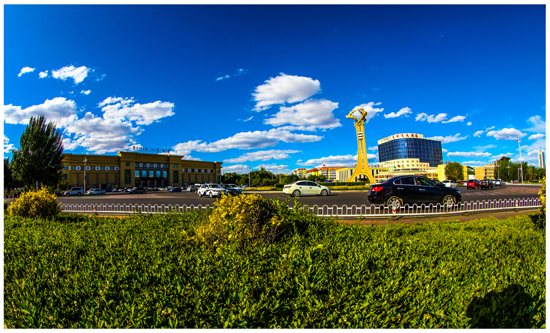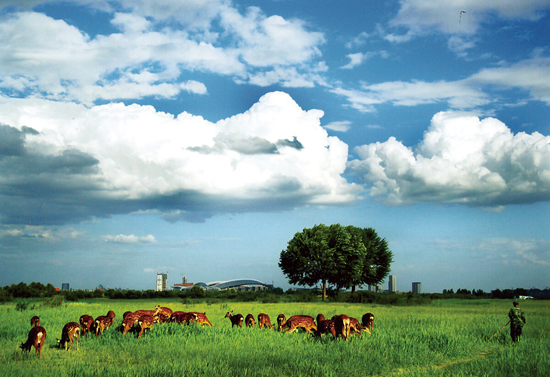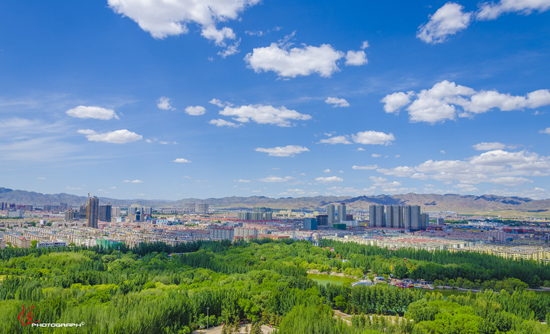Baotou
Located in the western part of Inner Mongolia autonomous region and adjacent to the Republic of Mongolia to its north and the Yellow River to its south, Baotou is the largest city in the autonomous region and an important transport hub.

Baotou, also goes by the name Lucheng city, which, roughly translated, means "a city with deer". [Photo provided to chinadaily.com.cn]
Baotou plays a key role in the economic expansion of Inner Mongolia and the implementation of China's Belt and Road Initiative, which involves the revival of the ancient overland and marine Silk Road routes. It serves as a part of Inner Mongolia economic circle together with Hohhot and Ordos. Spanning a total area of 27,768 square kilometers, the city has nine banner counties and one national rare-earth high-tech industrial development zone.The city also goes by the name Lucheng city, which, roughly translated, means "a city with deer".
In 2025, efforts will focus on accelerating the construction of key industrial clusters, including rare earth and silicon. The city aims to achieve significant progress in education, healthcare, and cultural development, improve living standards, maintain social harmony and stability, and raise its economic output to approximately 500 billion yuan ($68.2 billion).

Baotou, also goes by the name Lucheng city, which, roughly translated, means "a city with deer". [Photo provided to chinadaily.com.cn]
The city is also home to many large-scale enterprises concerning steel, aluminum, equipment manufacturing and rare-earth processing industries. It contains important bases for energy, raw materials, rare earth, new-type coal chemical and equipment manufacturing industries. Known as the "steel city in the grassland" and the "capital of rare earth," Baotou boasts a variety of high-quality mineral resources. It contains many large storage facilities, making it an ideal place to harvest natural resources. 74 different minerals ranging from metals to rare earth have been found in Baotou, making it a world-level rare earth industrial cluster.

Baotou, also goes by the name Lucheng city, which, roughly translated, means "a city with deer". [Photo provided to chinadaily.com.cn]
Baotou boasts plenty of attractions. Its historical and cultural scenic spots include the Site of A'shan, Machi Ancient City and the Great Walls constructed during the Warring States period (475-221 BC) and the Qin Dynasty (221-206 BC). It also features famous cultural scenic spots such as Wudangzhao and Meidaizhao temples, landscapes involving Xilamuren Grassland, Jiufeng Mountain and Saihantala Ecological Park.
Baotou has shown its intention of prioritizing ecological development by building more than 20 parks, 30 plazas and over 120 urban landscapes.
It is also winners of many international and domestic appraisals for its ecology protection, including United Nations Habitat Scroll of Honor Award, National Forest City, National Garden City, National Sanitary City and National Outstanding Tourist City.
